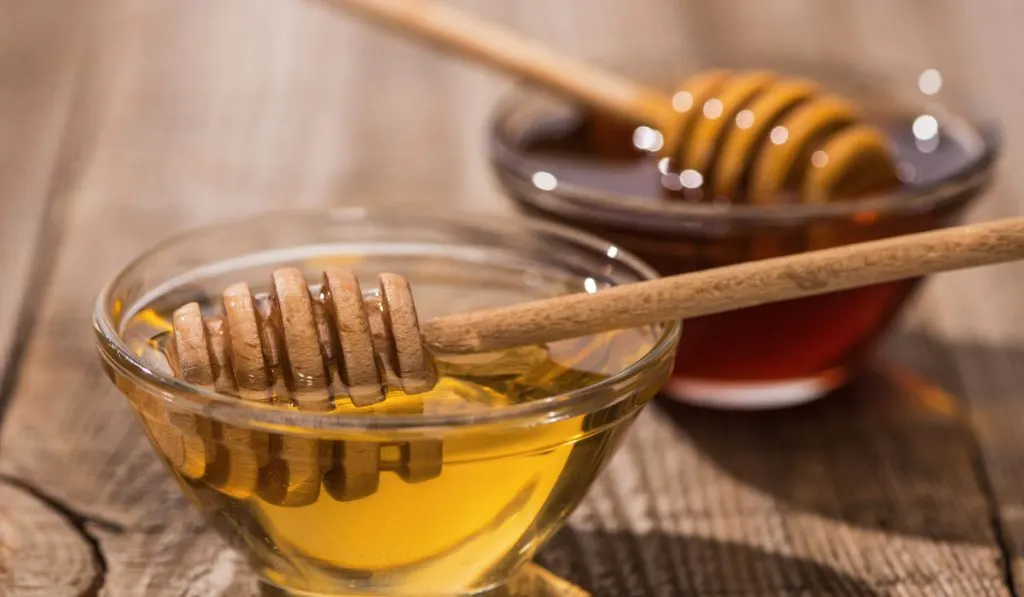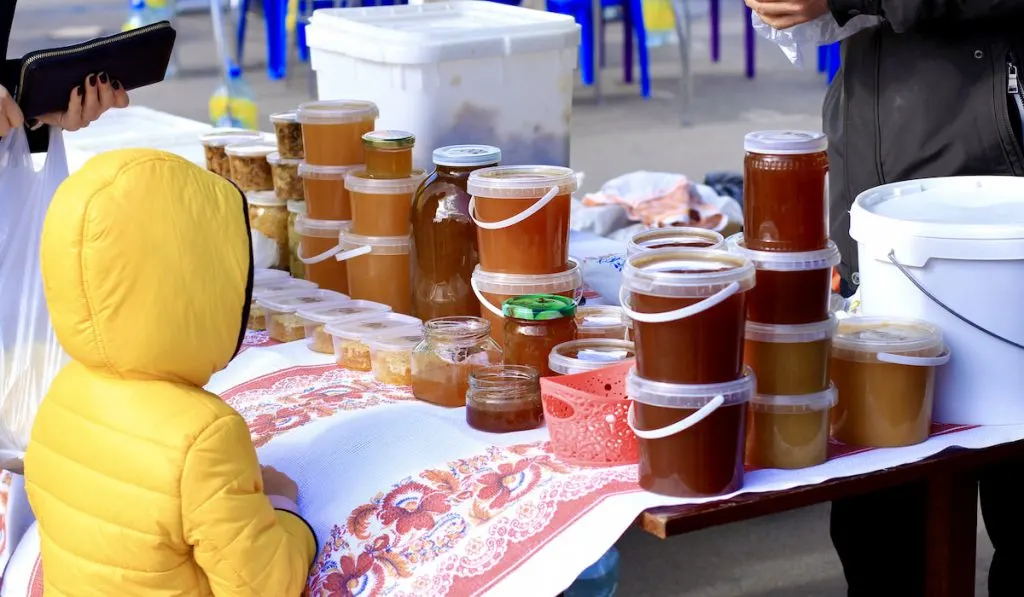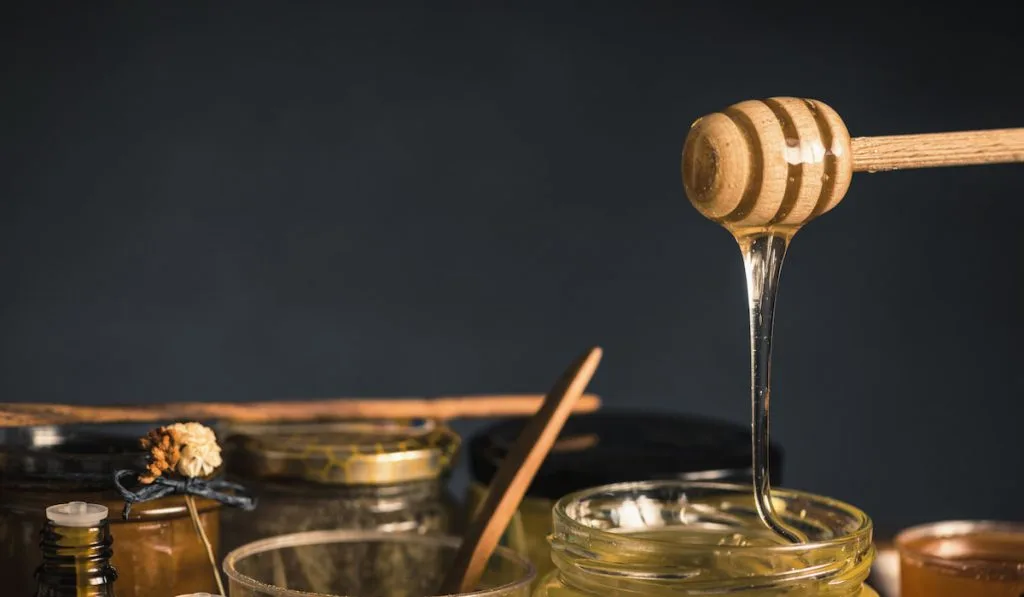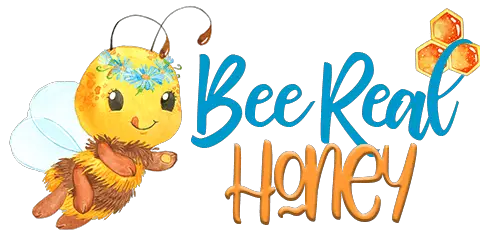*This post may have affiliate links, which means I may receive commissions if you choose to purchase through links I provide (at no extra cost to you). As an Amazon Associate I earn from qualifying purchases. Please read my disclaimer for additional details..
Have you ever wondered if the honey you are consuming is 100% pure honey? Some honey is blended with other sugars or ingredients. How can you identify real honey? Is pure honey the same as raw honey? Read on to find answers to these questions.
What are the differences between real and fake honey? Real honey is simply unaltered honey, while fake honey is either diluted with water or mixed with other substances.
Real honey can be identified by conducting a few kinds of tests such as flame tests, water tests, paper tests, and others.
There are also many health benefits to honey, which will be discussed later.

Table of Contents
Real Honey versus Fake Honey
What do we mean by real honey? Let us define real honey and fake honey.
What is Real Honey?
In simple terms, real honey, or pure honey, is unadulterated. This means that the honey is straight from the beehive without processing or filtering.
Real honey can be classified as:
- Raw unprocessed honey
- Semi-processed honey with zero additives
If honey is not filtered, you may find some particles such as bee residue, pollen, honeycomb, and other substances in the honey. The purpose of processing real honey is to filter out these particles.
What is Fake Honey?
Fake honey is any honey that has been altered or added to. Fake honey looks very much like real honey; often only testing can determine pure honey from fake.
Bees produce pure honey, while some companies manufacture their own honey, or dilute the pure honey made by bees.

Fake honey contains additives such as syrups, molasses, water, etc. and lacks some of the qualities of real honey such as taste, aroma, and durability.
What are the Differences between Real and Fake Honey?
There are many differences between real and fake honey.
If you tested it in a lab, you would discover that real honey has lower than 20% moisture, and has a very low pH of 3.5-6.
Laboratory tests can also identify additives in fake honey.
You do not have to go to the lab every time to test your honey. With the tests we will discuss below, you can test your honey by yourself.
How Do You Know if Honey is Real or Fake?
Do any (or all) of the tests below to distinguish real from fake honey.
1. Flame or Heat Test
The flame test is a simple test that works on the principle that real honey is flammable. An easy way to perform this test is to take an object such as wood or cotton, dip it into the honey, and then set it ablaze.
If it burns, it is real. If however, the sample does not burn, the honey may contain some additives, and therefore is not real honey.
The heat test is a bit safer than the flame test. Heat any item made of stainless steel (you can use a stainless steel wire) and dip it into the honey. If the honey sticks to the item while bringing it out, it is real. If it quickly flows back into the jar, it is fake.
2. Water Test
Pour water into a clean container then add the honey you intend to test. Fake honey dissolves easily and quicker than real honey in water. Real honey will fall to the bottom of the container and form clumps because pure honey is denser (heavier) than water.
Real honey will only dissolve in water when it is stirred or if the water is hot.
3. Texture

The texture test is the easiest of all tests. It is sometimes called the thumb test. Real honey is dense and sticky and has a lower viscosity than other liquids such as water and fake honey.
To carry out this test, dip a clean thumb into the bottle of honey you wish to test. Remove your thumb and monitor the honey on your thumb.
If the honey on your thumb spreads quickly, it might be fake. Real honey will stick to your thumb or spread very slowly.

4. Paper Test
This test is also easy. Pour honey on a piece of paper. Wait for 30 seconds or more and then inspect the regions of the paper around the honey.
If the honey is diluted, you will notice dampness spreading around the honey in the paper.
Real honey is less than 20% moisture, so the area of the paper around the honey should appear dry.
5. Bread Test

This test comes with a reward. If the honey is real, you get to eat the bread. Of course, you can eat any “honey” labeled and sold as food, no matter how this test turns out.
Just dip a slice of hard or toasted bread into honey and wait for 30 seconds or more.
If the bread remains hard, the honey is real. Only the moisture of fake honey can soften the bread.
That’s a lot of tests. With the tests above, you will easily identify real honey.
Have you ever heard of raw honey? Is real honey the same as raw honey? Keep reading.
Is Real Honey Different from Raw Honey?
Remember what we classified real honey into? We classified real honey into raw unprocessed honey and semi-processed honey with zero additives.
In simple terms, raw honey is straight from the hive. This kind of honey has some impurities in it such as bee residues, propolis, beeswax, pollen, etc. Some people believe that raw honey offers more benefits than filtered honey.
What are the benefits of honey?

What are the Benefits of Honey?
The list below contains some benefits of honey:
- Honey contains antioxidants that can help the body to fight some diseases and cancer.
- Many microorganisms are incapable of growing in honey because of its acidity and moisture content. This also makes honey extremely long-lasting.
- Honey is sweet and can be used as a sweetener for food and drinks; you can use honey instead of sugar.
Final Thoughts
Hopefully, you have learned a lot about the differences between real and fake honey. With the tests above, you can identify real honey without going to a laboratory. Make sure that you consume only real honey for the maximum health benefits.
Have you tried any of the tests above on your honey? Is your honey real or fake? Share your thoughts in the comment section below.
Resources
- https://www.wikihow.com/Verify-the-Purity-of-Honey
- https://medium.com/@jamescollon82/how-to-check-the-purity-of-honey-7c433c61c3f6
- https://www.smithsonianmag.com/science-nature/the-science-behind-honeys-eternal-shelf-life-1218690/
- https://en.wikipedia.org/wiki/Honey#Wounds_and_burns
- https://backyardbeekeeping101.com/best-raw-honey-brands/
